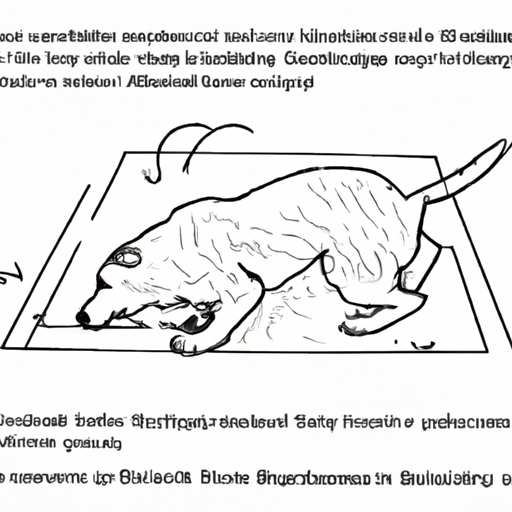As a caregiver for your furry friend, you may have noticed your dog engaging in a peculiar behavior—scratching their butts on the floor. This act, colloquially referred to as “scooting”, can be both amusing and concerning. In this comprehensive guide, we’ll delve into the why’s and how’s of this behavior, and explore what you can do to help your pet.
1. Understanding the Behavior: Why Dogs Scoot
Firstly, it’s important to understand that scooting is typically a sign of discomfort in dogs. They aren’t doing it for entertainment. If your dog is regularly dragging their bottom across your carpet, it’s likely they are attempting to alleviate an itch, irritation, or pain. Here are the common reasons:
- Anal Gland Issues: Dogs have two small glands located near their anus. Sometimes, these glands can become clogged or infected, causing discomfort.
- Parasites: Parasitic infections, like worms or fleas, can cause itching around the anal area.
- Allergies: Dogs can have allergic reactions that cause itchy skin, including around the butt.
- Dietary Issues: Certain foods can cause bowel issues, leading to discomfort around the anus.
- Infections or Diseases: Less commonly, more serious conditions like tumors or infections can cause scooting.
2. Spotting the Signs: What to Look For
Spotting the signs of scooting early can help you address the issue promptly. Here’s what to look out for:
- Excessive licking or biting at the tail or rear
- A bad smell coming from your dog’s rear
- Blood or pus in your dog’s stool
- Changes in your dog’s bowel movements
- Difficulty sitting or signs of discomfort
3. Taking Action: What You Can Do
If your dog is scooting, you can take several steps to help them. Here’s what you can do:
- Check for Parasites: If your dog is infested with parasites, consult a vet for proper treatment.
- Address Dietary Issues: If you suspect food might be the culprit, consider changing your dog’s diet.
- Anal Gland Expression: If anal glands are the issue, they might need to be expressed, or emptied. This is best left to a professional groomer or a vet.
- Visit the Vet: If scooting continues, visit the vet. It could be a sign of something more serious.
4. Preventing the Issue: Tips and Tricks
Prevention is always better than cure. Here are some tips to prevent your dog from scooting:
- Regularly groom your dog and check for any signs of parasites.
- Maintain a balanced diet for your dog.
- Regular check-ups with the vet can help spot issues early.
5. Common Misconceptions about Scooting
A common misconception is that scooting is normal or funny behavior. However, it’s a sign of discomfort and should not be ignored. Another misconception is that only unclean dogs scoot. This is not true. Any dog can develop the conditions that lead to scooting.
Frequently Asked Questions (FAQ)
Q: How can I tell if my dog’s anal glands are causing the issue?
A: If your dog’s anal glands are problematic, you might notice a foul smell, and your dog might lick their rear excessively.
Q: Can I express my dog’s anal glands at home?
A: While it’s possible, it’s not recommended unless you’ve been trained. Incorrect expression can cause injury.
Q: How often should I take my dog to the vet for check-ups?
A: Regular check-ups every 6 to 12 months are usually sufficient, but you should consult with your vet.
Q: Can I prevent my dog from getting parasites?
A: Regular preventative treatments can significantly reduce the risk of parasitic infections.
Q: My dog is scooting but appears otherwise healthy. Should I still visit the vet?
A: Yes. Scooting is a sign of discomfort, and it’s best to consult a vet to find the root cause.
In conclusion, while scooting can be a funny sight, it’s an indicator that your dog needs help. Understanding the causes and knowing how to respond can ensure your furry friend stays healthy and comfortable.



